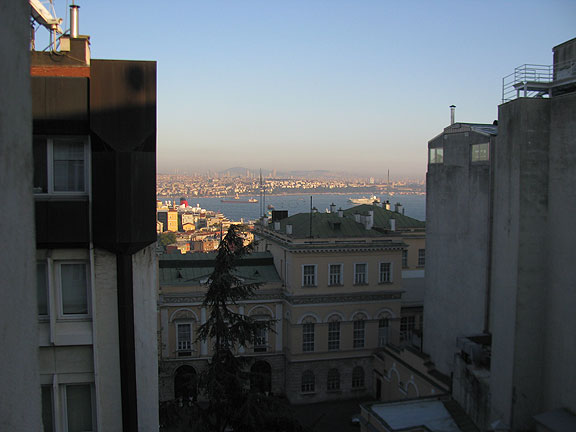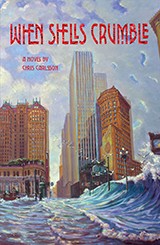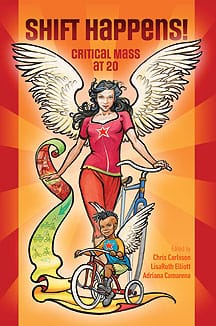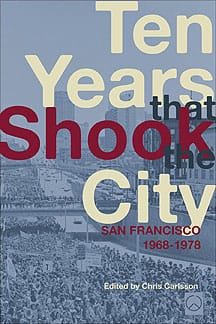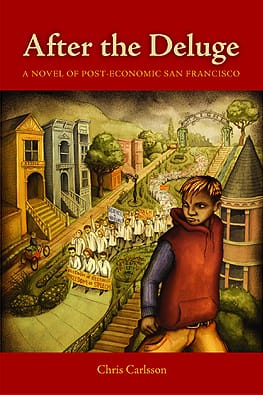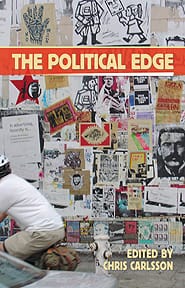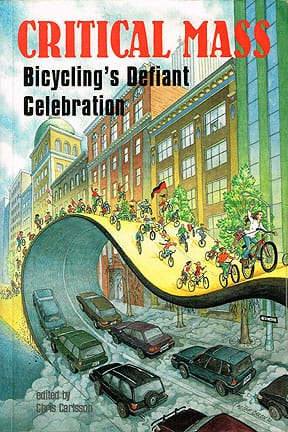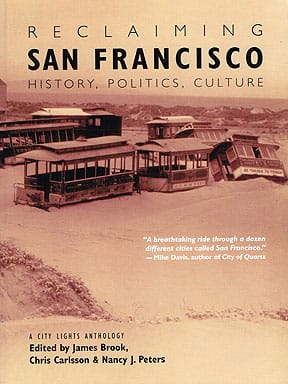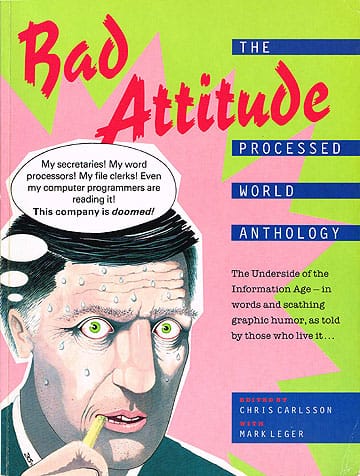It’s been 10 years since I started this blog, originally called “The Attitude Adjustor,” but retitled “The Nowtopian” in 2008 or so. And I just went six weeks without an entry, the longest gap in all these years I think… hmmm. Well, I’ve been quite busy as you can imagine. Spent the past six weeks employed as a curator and writer for a new Tenderloin Museum slated to open in Fall 2014 at the Cadillac Hotel in San Francisco’s Tenderloin. We’ll see how what I wrote turns out after museum designers—and editors unknown—get done with it! I’m guessing it’ll get pretty flattened and drained of some of what I think are the most important histories, but let’s hope for the best.
I’ve been reading a lot during these past months too, and will be writing about two books in particular in this entry. First, my enthusiastic kudos to Jonathan Lethem for Dissident Gardens and Margaret Atwood for the final volume in her trilogy MaddAdam—two novels that I really enjoyed. (I also plowed through Oscar Wilde’s classic Portrait of Dorian Gray but I really didn’t like it, thereby violating my cardinal rule of not finishing anything that I don’t really enjoy.) I mentioned in the past entry how much I loved Gary Kamiya’s Cool Gray City of Love, which went right into my top five of books about San Francisco past and present. (Kamiya also generously and graciously allowed us to use two excerpts on FoundSF, one a great short history of the Western Addition, and the other about searching for evidence of the original inhabitants of San Francisco.) And I just cruised through Ian Buruma’s fascinating Year Zero about 1945. I had that lurking sense that things happened in that year that are still shaping our lives today, and to some extent that is borne out by his book. The assault on labor and the left that began in the waning months of WWII set the stage for so much of the Cold War and the way things evolved in the last half of the 20th century, right up to and including the bizarre ideological zombies parroting all this pro-market gibberish in the wake of the tidal wave of displacement and community destruction underway in San Francisco.
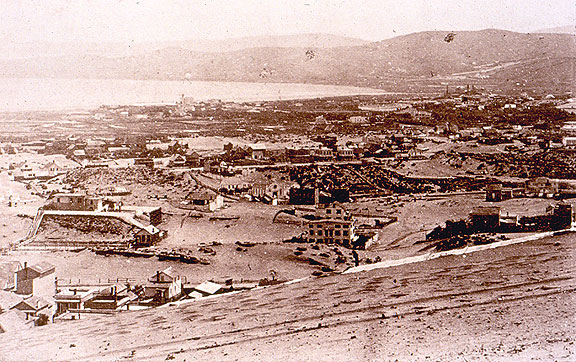
St. Ann’s Valley, 1858, looking south across what would later become the Tenderloin and South of Market towards Mission Bay and Potrero Hill in the distance.
And that leads me to today’s topic which is broadly “liberalism.” Twenty years ago I read Immanuel Wallersten’s After Liberalism, which I thought was a sharp analysis and very cogent explanation for the post-Cold War world. In it he looks at the long trajectory of politics from the French revolution through the 20th century and showed how liberals had come to depend on communism, without which they had trouble explaining what they stood for. As long as there was a totalitarian left the liberals could masquerade convincingly as a humanist left. (It deserves to be mentioned, though, that Jimmy Carter was the first neoliberal president, pushing a deregulatory privatizing agenda even before Reagan came in to accelerate the process—see Jefferson Cowie’s excellent Stayin’ Alive: The Last Days of the American Working Class for a great analysis of this.)
But what we’ve seen during the quarter century since the collapse of the Soviet Union is a similar and perhaps more abject collapse of liberalism. Bill Clinton, still strangely lauded as a liberal Democrat, oversaw the deregulation of the financial industry, the destruction of the welfare state, and strongly pushed free trade (NAFTA and WTO) along with privatization at every turn (Obama has just been more Clintonism, perhaps a bit more aggressively pro-corporate). Tony Blair did the same in England at the head of a “Labor” government. In England of course, as in Europe more generally, “liberal” does not refer to people on the left. (The Economist magazine considers itself a liberal newspaper even though it’s a magazine and one of the most staunchly pro-business rags in the world.) In the United States official politics is divided between the two parties and the two acceptable ideologies, which used to be liberal and conservative, but after 1990 or so, it became moderate and conservative, with the label “liberal” so derided by the right-wing media echo chamber that no mainstream politician would defend it any more. To be sure, many vaguely leftish folks these days still call themselves “liberals” in the U.S. Plenty of the tech “working class”—who are raking it in and dominating the SF real estate market—claim a socially liberal politics while promulgating a harsh libertarian pro-market economic bias, which in terms of classical definitions is purely liberal too. The odd hybrids of liberalism, libertarianism, and progressivism mixing and matching in this area these days clearly can be connected to the long, strange history of liberalism.
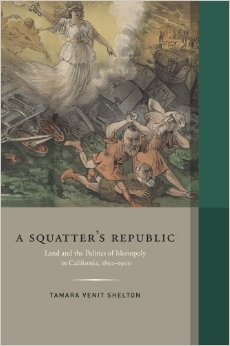 Far be it from me to try to take on such an enormous topic as liberalism in a simple blog post, but I am going to dig around the peculiar and specific roots of western liberalism while considering two excellent new books on California history. The two books are Reading for Liberalism: The Overland Monthly and the Writing of the Modern American West by Stephen J. Mexal (University of Nebraska Press: 2013) and A Squatter’s Republic: Land and the Politics of Monopoly in California, 1850-1900 by Tamara Venit Shelton (© 2013 Huntington Library, Art Collections, and Botanical Gardens and University of California Press). I’ve been teaching San Francisco history for the past few years at the SF Art Institute, and that’s given me a chance to learn a lot about the first 50 years of urban growth here. San Francisco has a remarkably short history actually, and it’s easy to think that what happened in the 19th century, while charming and often surprising, has little to do with the modern metropolis of 7+ million ringing the Bay nowadays. But echoes of those long-ago days keep reverberating against the walls of today’s City, from the wild real estate speculation that goes on much as it did in the days when this peninsula was still sand dunes and mud flats, to the deep racism and classism that white settlers brought to California and from which the state has never fully freed itself, San Francisco’s reputation for racial diversity and tolerance notwithstanding.
Far be it from me to try to take on such an enormous topic as liberalism in a simple blog post, but I am going to dig around the peculiar and specific roots of western liberalism while considering two excellent new books on California history. The two books are Reading for Liberalism: The Overland Monthly and the Writing of the Modern American West by Stephen J. Mexal (University of Nebraska Press: 2013) and A Squatter’s Republic: Land and the Politics of Monopoly in California, 1850-1900 by Tamara Venit Shelton (© 2013 Huntington Library, Art Collections, and Botanical Gardens and University of California Press). I’ve been teaching San Francisco history for the past few years at the SF Art Institute, and that’s given me a chance to learn a lot about the first 50 years of urban growth here. San Francisco has a remarkably short history actually, and it’s easy to think that what happened in the 19th century, while charming and often surprising, has little to do with the modern metropolis of 7+ million ringing the Bay nowadays. But echoes of those long-ago days keep reverberating against the walls of today’s City, from the wild real estate speculation that goes on much as it did in the days when this peninsula was still sand dunes and mud flats, to the deep racism and classism that white settlers brought to California and from which the state has never fully freed itself, San Francisco’s reputation for racial diversity and tolerance notwithstanding.
Both Mexal and Shelton are very good writers and both have done excellent jobs of delving into histories that we stopped thinking about a long time ago, if we ever did. Mexal sets out to do a combined literary, philosophical, and political analysis of the writings that appeared in San Francisco’s Overland Monthly magazine from its founding in 1868 under the editorship of Bret Harte. His goal, as his full title suggests, is to excavate the way the writings in this influential journal helped shape the self-conception of liberal republican society in the West in the post-Civil War era, an era characterized by growing industrialization and expansion of capitalist enterprises in agriculture, shipping, manufacturing, and more. Ultimately, the efforts of Overland Monthly writers are directed towards promoting development of the West at a time when the boundaries of civilization and wilderness were blurry, as were the boundaries between who qualified as members of civilized society and those who fell outside its edges. (Gray Brechin’s important Imperial San Francisco shows how Union Iron Works owner Irving M. Scott used the Overland Monthly—of which he became a director after buying a 100-year subscription—in the late 19th and early 20th century to promote an aggressive, militaristic, and imperial California—a story invisible in Mexal’s work.) For Mexal the liberal republicanism under construction in the 1860s and 1870s in California was trying to “balance the rights of the individual with the good of the public.” This is already a departure from the classical liberalism of philosopher John Locke which assumed (politically at least), as Margaret Thatcher did two centuries later, that there was no such thing as society, and that everything came down to the atomized individual. Continue reading Liberalism… Still!









